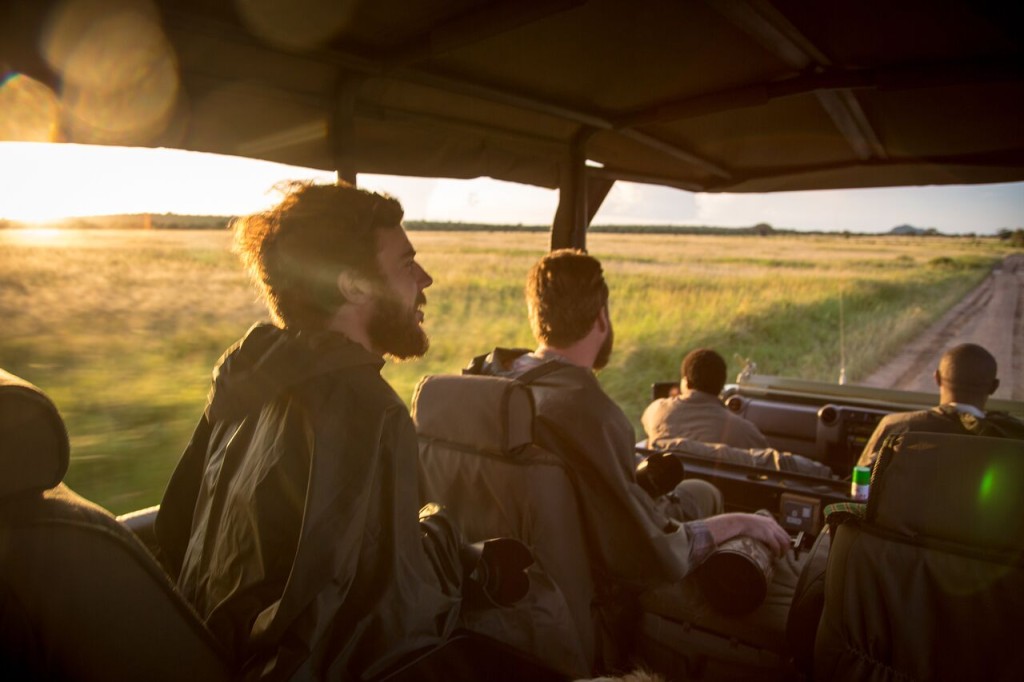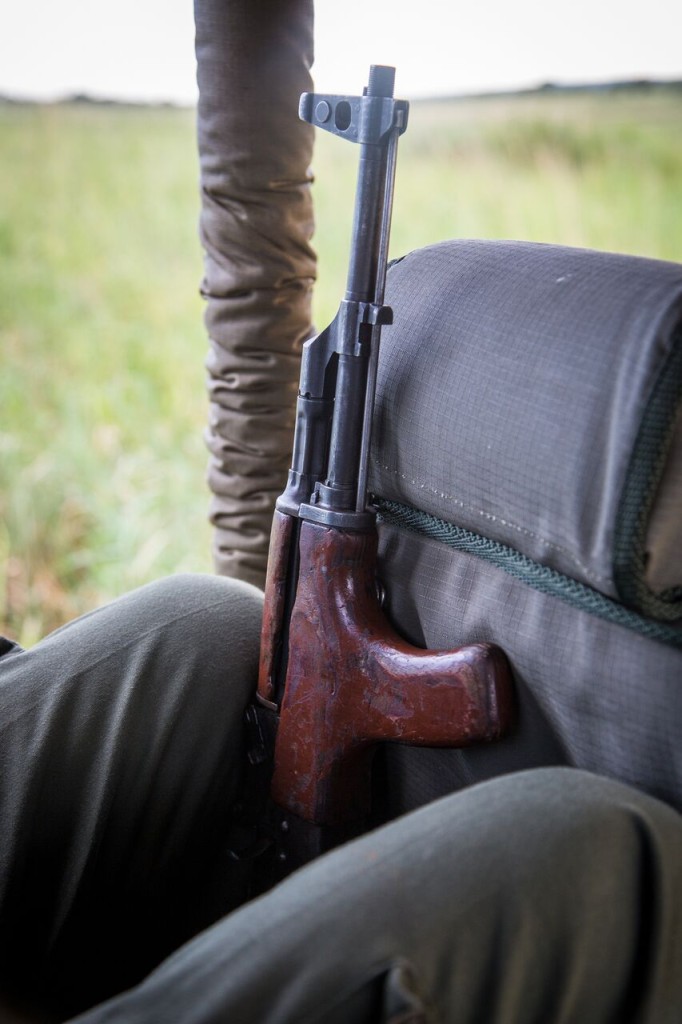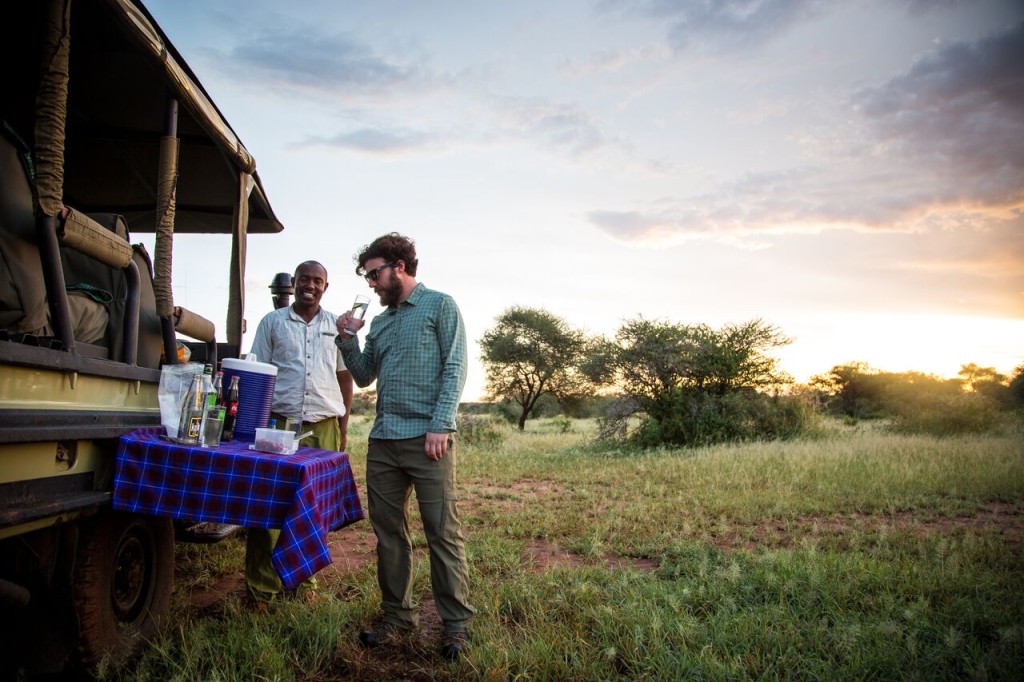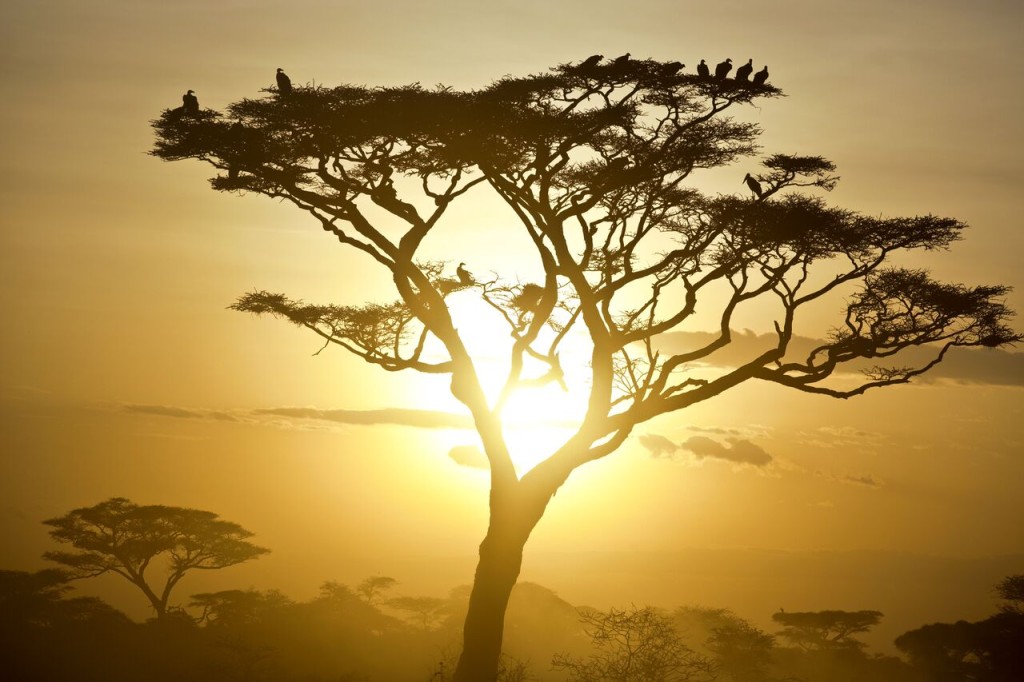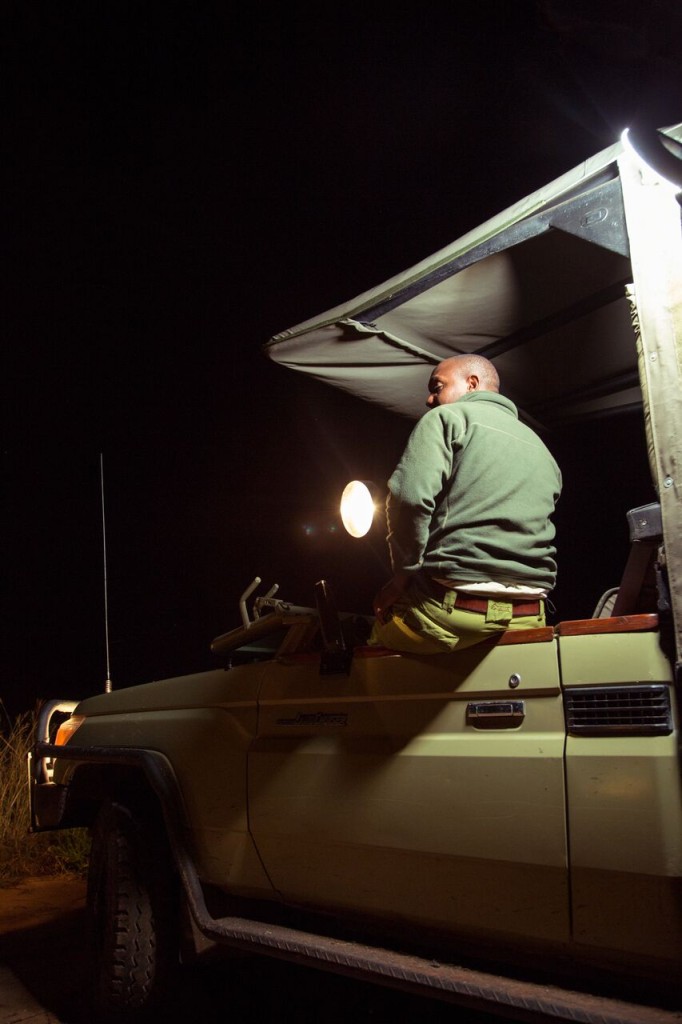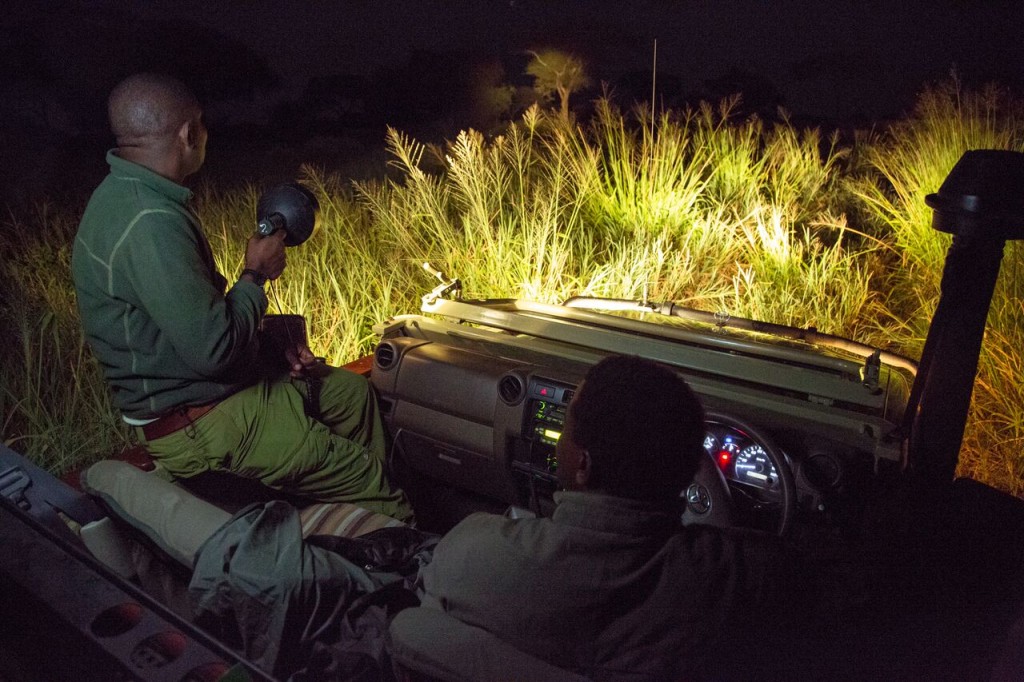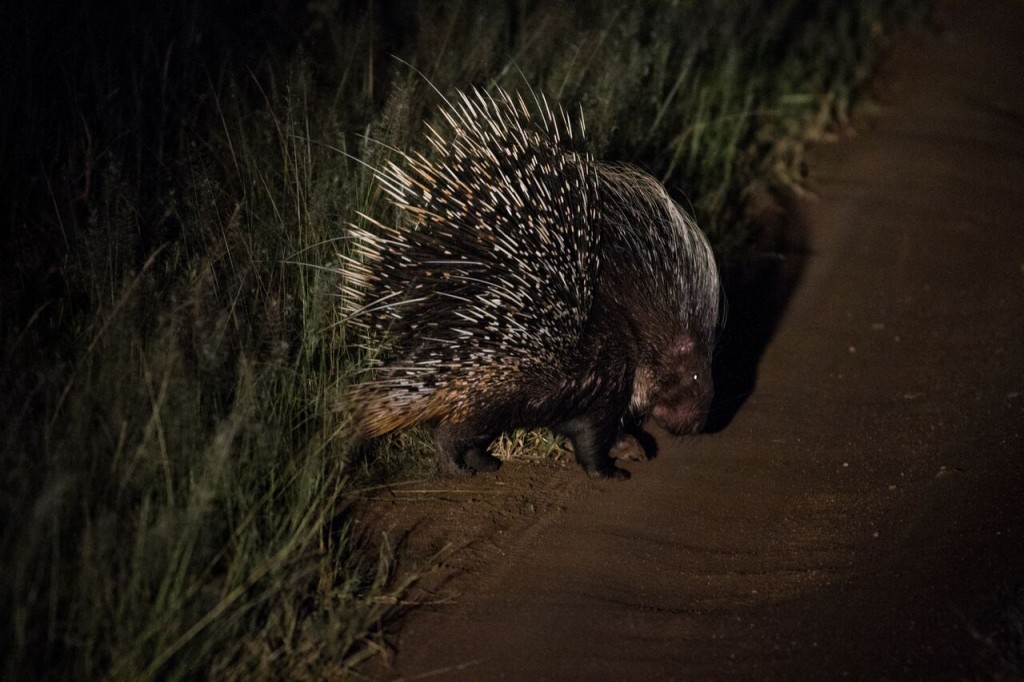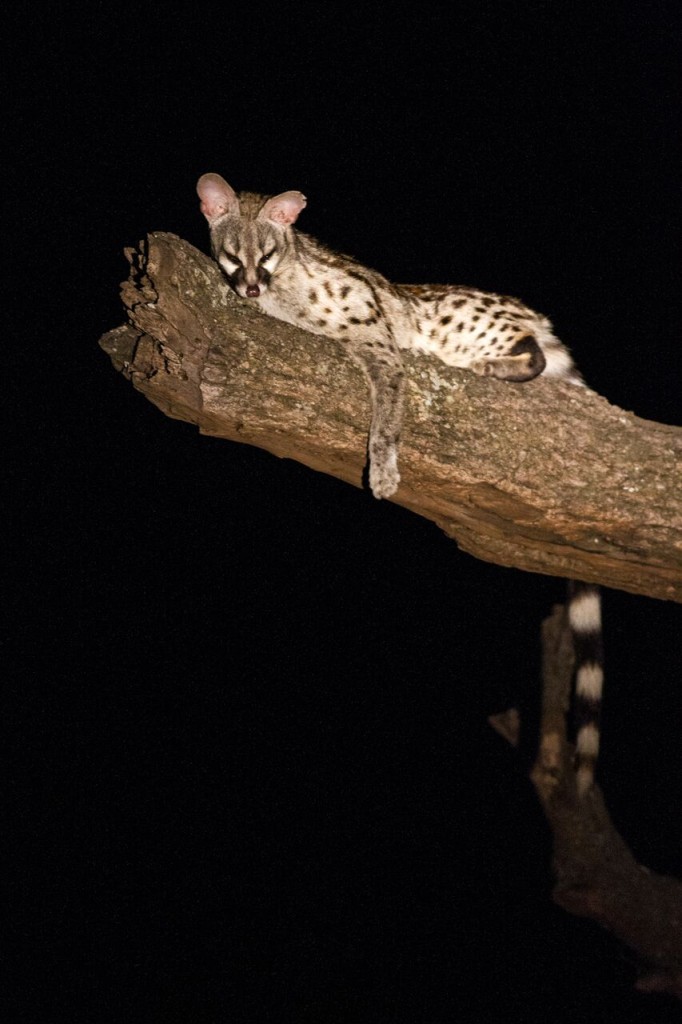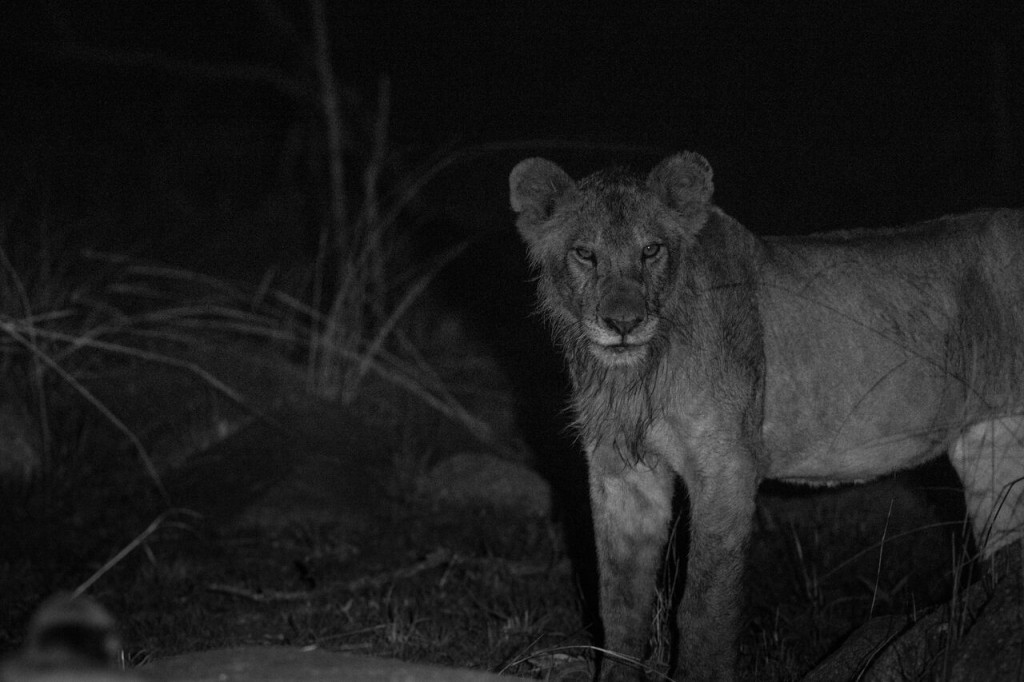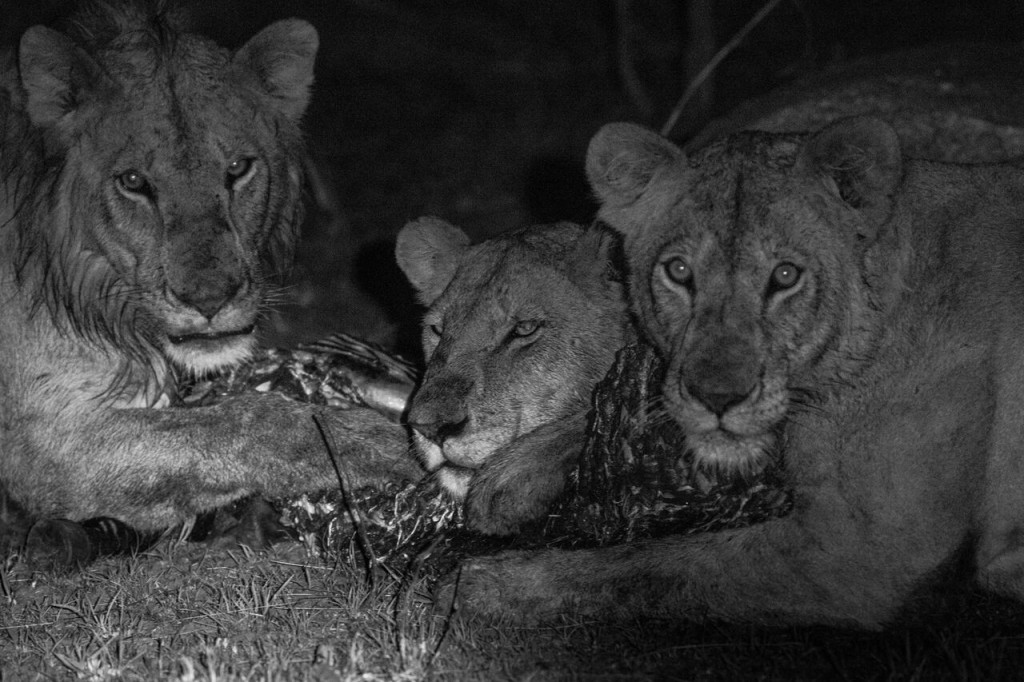A Night Safari with Asilia Africa
By Stuart Butler
Anyone who’s been lucky enough to spend a day on safari in one of the famous savanna reserves of East Africa will know all about the thrill of watching wildebeest stampede over the plains, lions munch on the antelope that didn’t get away and elephants trumpeting at the water hole.
As action packed as it all seems, the real excitement of the savannah doesn’t take place until after the sun has set and the safari tourists have returned to camp for a long, lazy dinner. At night the lions lift themselves out of their daily torpor and start tracking zebra, the leopard you’d been watching dozing in the tree slips down into the undergrowth and chases after whatever moves whilst dozens of species that remained buried deep underground in the day emerge with the moon to forage, hunt and scavenge.
The problem for us sensory stunted humans though is that we can’t see much of this action. In northern Tanzania’s elephant packed Tarangire National Park though Asilia Africa’s Oliver’s Camp and Little Oliver’s Camps operate night safaris using spotlights to search out the action. Join us on the dark side of a safari.
Night Time Safari at Oliver’s & Little Oliver’s
Let the fun begin…
A night safari in Tarangire usually begins around 4.30pm with an afternoon game drive in one of Asilia Africa’s customised, state of the art, safari jeeps. At this time of day, as the light starts turning a beautiful golden colour, the diurnal animals that typify an African safari are rousing themselves from their afternoon heat inspired siesta.
Park Ranger Protectors
As you leave camp for your afternoon safari an armed park ranger will join you in your vehicle. They’re compulsory on night drives and if you ask many of them are happy to give you a bit of an insight into their day to day life as a park ranger.
Sundowners Before the Big Show
Your guide and driver will most likely take you in a roundabout kind of fashion to one of their favourite view points for a ‘sundowner’. A sundowner quickly becomes one of the favourite aspects of many a guests safari and let’s face it what can be better than a gin and tonic with a selection of snacks served up with a beautiful view?
The Perfect end to a day in Africa
The classic African sunset image can be taken in many of East Africa’s protected areas. This one was actually taken in the Ngorongoro Conservation Area and shows vultures and a marabou stork roosting in a large acacia tree.
With darkness having now fallen the drinks and snacks will be cleared away and a powerful spotlight brought out and readied for the next stage of the adventure.
Safari Experiences at Night
A night time safari offers a very different experience to a daytime safari. Aside from the beam cast by the single spotlight, which a guide will swing in large gentle arcs as he searches for animals, there is nothing but blackness. But out of this darkness comes noises. There’s always the incessant high-pitch scream of the cicadas and these might be interspersed with a throaty call from the tree frogs and the snorting and grunting of invisible zebra, impala and wildebeest. Then, quite suddenly, glowing green eyes are caught in the spotlight beam. A creature has been found, but what is it? It takes a moment for our slow and unresponsive eyes to focus.
A Prickly Friend Appears
It’s a porcupine. Fairly common but rarely seen by day with a little luck one might be spotted on a night safari scampering through the undergrowth. The porcupine might not look like it but it’s a rodent from the same group of animals as mice, rabbits and squirrels. They’re large and can weigh an impressive 27kg. Their most obvious feature is, of course, their armoury of spiny quails. These are actually just modified hairs coated with a thick layer of keratin. They become easily dislodged from the porcupine on contact with other objects (hence why the quails are so frequently found on the ground) but contrary to popular belief a porcupine cannot fire its quails at an attacker. Even so many animals sensibly give porcupines a wide berth.
Glittering Eyes in the Dark
Leaving the porcupine to its business you drive further on into the night. Through the sweeping motion of the spotlight, you can see that you’re on an open plain with occasional scattered trees. A reflection of staring eyes glows back from one of the trees. It’s a genet. These unusually graceful omnivorous creatures look and behave much like cats but they’re actually more closely related to the mongoose family. In 2014 photographs taken with a camera trap showed a genet riding on the back of a rhino and a couple of different buffalo. It was the first time this kind of ‘hitch-hiking’ behaviour had been recorded and for the moment, we don’t know why genets might engage in such an activity.
Moving on the night suddenly seems dangerously still and quiet. It’s as if everything is waiting for something they know is going to happen. Then, stepping out from behind a dead tree, comes the most feared predator of the night. A lion. This one is just a young male as you can tell by its short, straggly mane. But he has friends in the vicinity.
Africa Comes Alive at Night!
A deep, throaty roar echoes through the night. It sounds like nothing you’ve ever heard before but even so you know immediately what it is and a shiver runs down your spine. A full-grown adult lion is roaring out its message. You round a corner and the spotlight lights up a whole pride of lions on a fresh zebra kill. They’re tearing into it with ferocity. Those lions you saw looking dopey and sleepy under a tree in the midday heat are suddenly alive, alert and terrifying. There must be a dozen of them around the jeep, but with only a single spotlight it’s hard to make out where they all are. The hairs on the back of your head feel as if they’re standing on end in fear. You can sense the lions, just metres away, all around you and because you cannot see most of them you feel as if one is about to leap into the open-sided vehicle at any moment. This is safari at its most exciting!
More Experiences Articles

Experience A Slow Safari
26 July 2019By Anwynn Louw – Digital Marketing Assistant The Art of Slow Travel – “Slow T...

BBC One: Serengeti – The Elephant
25 July 2019By Britta Foulis – Content Marketing Manager BBC One’s latest mi...

Four Great Locations For A Family Reunion Safari In East Africa
19 July 2019By Anwynn Louw – Digital Marketing Assistant Planning a multigenerational saf...

BBC One: Serengeti – The Baboon
17 July 2019By Britta Foulis – Content Marketing Manager BBC One‘s latest mi...
